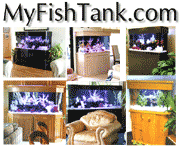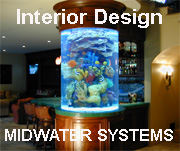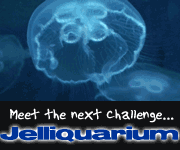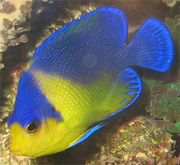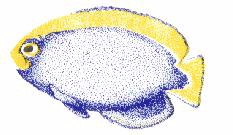|
Seafan and Gorgonian
Basic's

Seafans, more specifically called gorgonians, are the branching corals
that form finger or flat fan looking shapes. They are comprised of flexible
branching skeleton called gorgonin. The soft tissue that covers the branches
is called coenenchyme, and comes in a variety of red, orange, yellow, purple
and brown colors. Within this tissue reside the polyps, which are colonial
in nature, meaning as one feeds it benefits the entire colony.
Gorgonians require heavy water flow and preferably a flow that oscillates
back and forth, or at the least a chaotic flow. They will not tolerate
free floating algae, or any hair algae, in the aquarium as this eventually
becomes caught up in the web of the seafan and results in smothering it.
Seafans will require feeding. This can be done in a number of ways.
One way is to gently stir up the sand at the bottom of the tank. This will
result in suspending a number of small particles, bacteria's, and small
bits of organic compounds into the water. Another method is the addition
of 'green water' ( phytoplankton )or freshly hatched brine shrimp ( zooplankton
) into the aquarium. One can also use tweezers or a pipette to introduce
small pieces of mysis shrimp directly onto the polyps themselves.
Most of the gorgonians being imported come from either the Pacific or
the Caribbean. It is best to select ones that are openly branched as opposed
to the tightly interwoven ones.
Some gorgonians are photosynthetic ( light requiring ) and some are
non photosynthetic ( not light requiring ). One should consult literature
as to their specific needs. It is safe to say that all gorgonians prefer
strong, oscillation or chaotic, water movement.
|
Purple Frilly Seafan
Pseudopterogonia elisabethae

|
Purple Sea Plume
Muriceopsis flavida

|
|
Red Finger Seafan
Diodogorgia nodulifera

|
Green Lace Seafan
Pterogorgia citrinus

|
|
Purple Gorgonian
(?)

|
Red Lace Gorgonian
Plexaura flexuosa (?)

|
|
